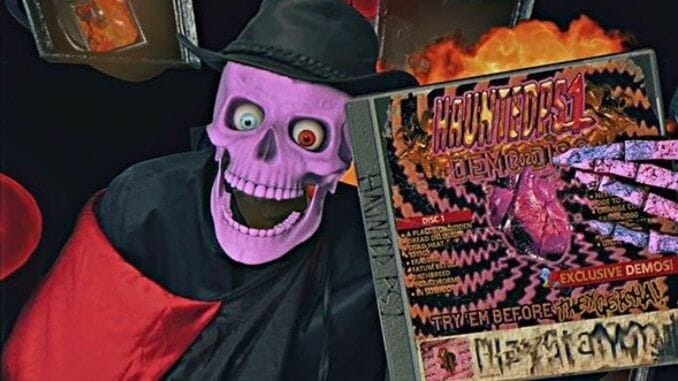The Haunted PS1 Demo Disc Series Looks to the Past to Create a New Future Outside Corporate Games

The first Haunted PS1 Demo Disc launched back in February 2020. It’s been followed by a 2021 Demo Disc, and two Madvent calendars, which include small horror games for every December date leading to Christmas. The conglomerate has also put out some side projects, such as C.H.A.I.N. and EKK3. To be clear, there has never been a literal demo disc. The PS1 in the name is more explicitly about atmosphere than hardware. The games are designed for contemporary PCs with modern tools. They do, though, embrace the limitations and restrictions of the PlayStation. Famously, the fog in Silent Hill was used to mask pop in or loading textures. The fixed camera angles of Resident Evil allowed developers to pre-render a single image, rather than having to present an entire 3D landscape. These choices came, at least in part, out of hardware restrictions, but also created a still beguiling aesthetic. As hardware has accelerated, fixed camera angles and distant fog have vanished from mainstream games. Despite the developmental tools, the now dozens of games on the two haunted demo discs embrace those kinds of limitations, artificiality setting boundaries because they are more interesting than realism.
The collections also draw on the logic of creepypasta like Ben Drowned. A PlayStation 5 cannot be haunted. An original PlayStation can be. Being haunted requires time, the ability to have witnessed terror. In the grand scheme of things, an original PlayStation is not that old, but it’s old enough to have a history, which is all that a good haunting requires. The 2021 demo disc even has a little meta-game museum, as well as a little backstory implying you have come across a haunted object. Fittingly, the collection is broadly nostalgic for a long dead era of gaming, one where demo discs, and demos from publishers outside of the indie space, were plentiful. When one could conceivably be aware of most games coming out, particularly in a sub-genre like horror. In some sense the demo disc combats how modern game marketing works, forgoing the anonymity of store algorithms and Steam sales for something contained, personal, and tactile.
This is distinct from other indie conglomerates like Wholesome Games, which mimic the contemporary marketing tactics of major publishers and studios. In videos like the Wholesome Direct, highlight reels gloss over various games of similar tone. Even specific trailers can get drowned out in the noise of a presentation. Nintendo Directs work largely because the audience is broadly familiar with the games advertised. It is unfortunately hard to get invested in a new title, if all you see of it is a couple minutes of a trailer or, worse, scant seconds in a highlight reel. Most of the games in a Wholesome Direct do have demos, but there is no way to access them all at once. You’ll have to seek them out individually on Steam.